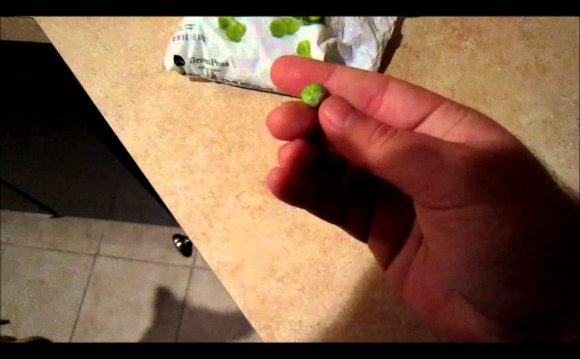
 Newly hatched baby fish are called "fry."
Newly hatched baby fish are called "fry."
If you find baby fish in your tank, don't panic! The first thing you should do is remove any adult fish so they do not eat the babies or move the baby fish to a separate tank where they can grow in safe environment.
Remove any adult fish from the tank using a mesh net or move the baby fish to a separate rearing tank. Many species of fish will actually eat their own young and even if the parents do not, other fish in the tank might. To transfer baby fish, scoop them up carefully in a cup rather than using a net.
Equip your rearing tank with a sponge filter to facilitate water flow without creating suction so strong that it might harm the baby fish. Sponge filters provide gentle mechanical and biological filtration that will help keep the tank clean.
Feed your baby fish a few drops of infusoria, a liquid fry food, from an eyedropper several times a day after they have just hatched. Infusoria is small enough that your baby fish will be able to eat it.
Crush up some flake food into a powder if you do not have any other options for fry food. To administer the food, dip the end of a toothpick in water then dip it into the powder. Submerge the tip of the toothpick in the tank near your baby fish to release the food.
Feed your baby fish small amounts of food several times a day. The first few weeks of life are the most important for your fish - they will grow quickly if they get enough food.
Raise some brine shrimp eggs to feed to your baby fish once they have grown large enough to eat them. Fry from livebearers are born fully formed and are usually big enough to eat baby brine shrimp right away. Fry from egg bearers are typically smaller after hatching and may need to grow for a week or two before they can accept baby brine shrimp.
Maintain a stable water temperature in your tank using a submersible aquarium heater. Research the preferred tank temperature for the species of baby fish you have and set the heat control on the heater to that temperature.
Perform small water changes in your rearing tank several times a week. To prevent harming your fry, create suction using a piece of aquarium airline tubing to siphon solid waste from the bottom of the tank.
Separate the fry into separate rearing tanks once they reach a half inch in size. For species that only grow 1 to 2 inches long at maturity, this may not be necessary. Providing your fish with more space will help them maintain healthy growth and will also make sure the tank does not become overcrowded.
Sell your baby fish once they reach 1 inch in size or release them back into your main tank. If your baby fish are a large species, you may want to let the fry grow to between one-fourth and half their mature size before selling them. If you have large or carnivorous species of fish in your tank, be sure the fry are large enough that they won't be eaten before adding them back into the tank.
Items you will need
- Mesh net
- Spare tank
- Cup
- Sponge filter
- Infusoria
- Eyedropper
- Flake food
- Toothpick
- Brine shrimp eggs
- Submersible aquarium heater









